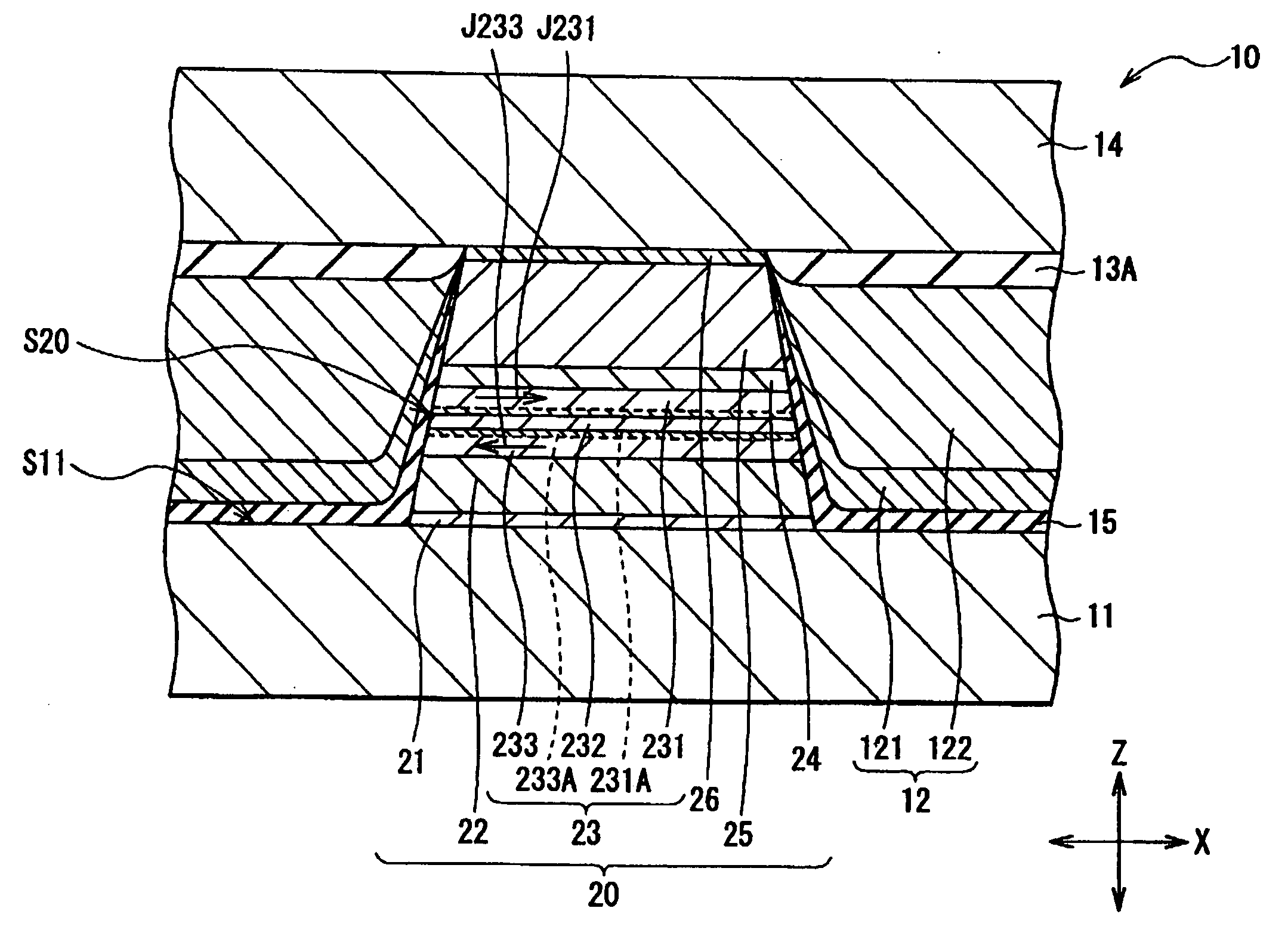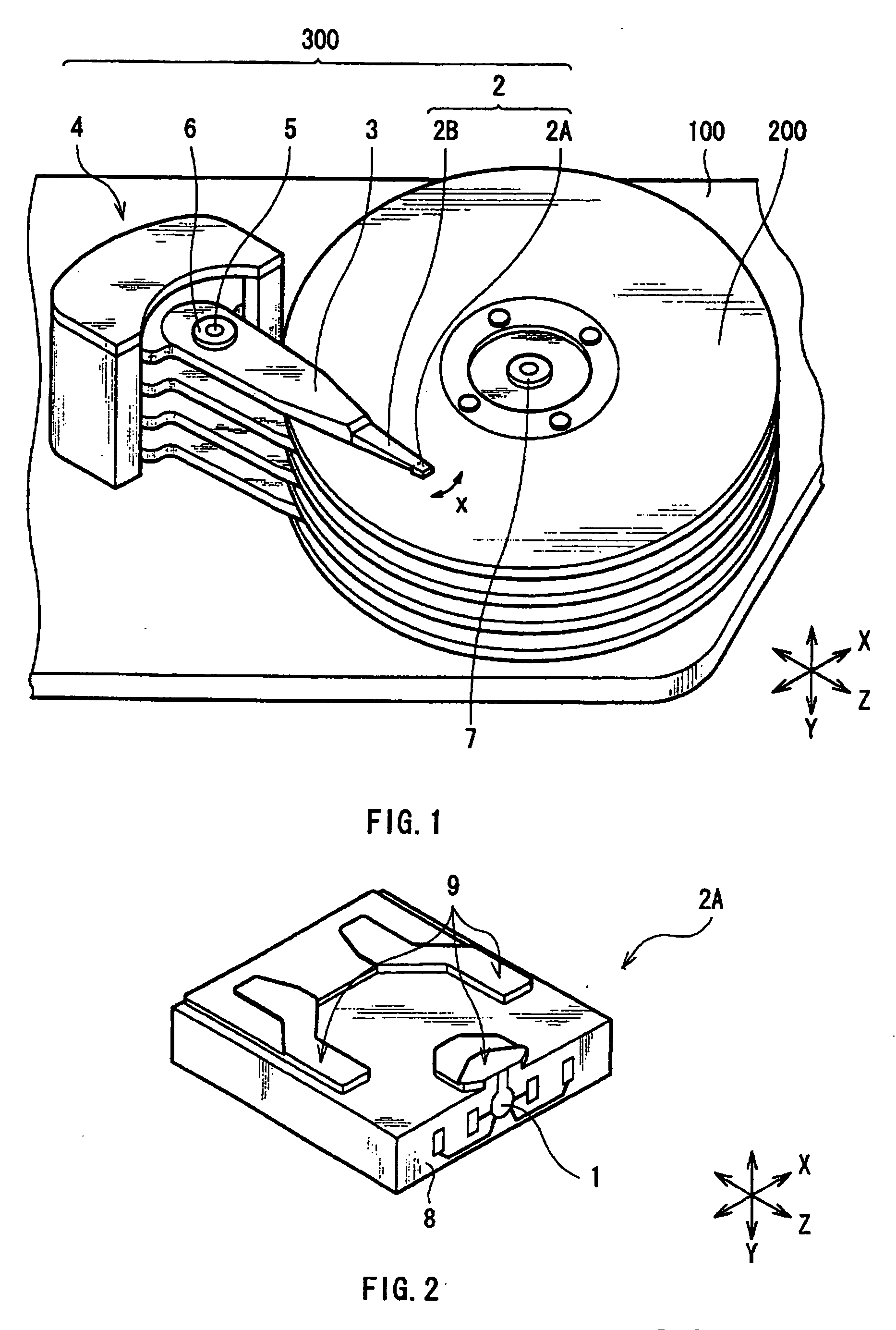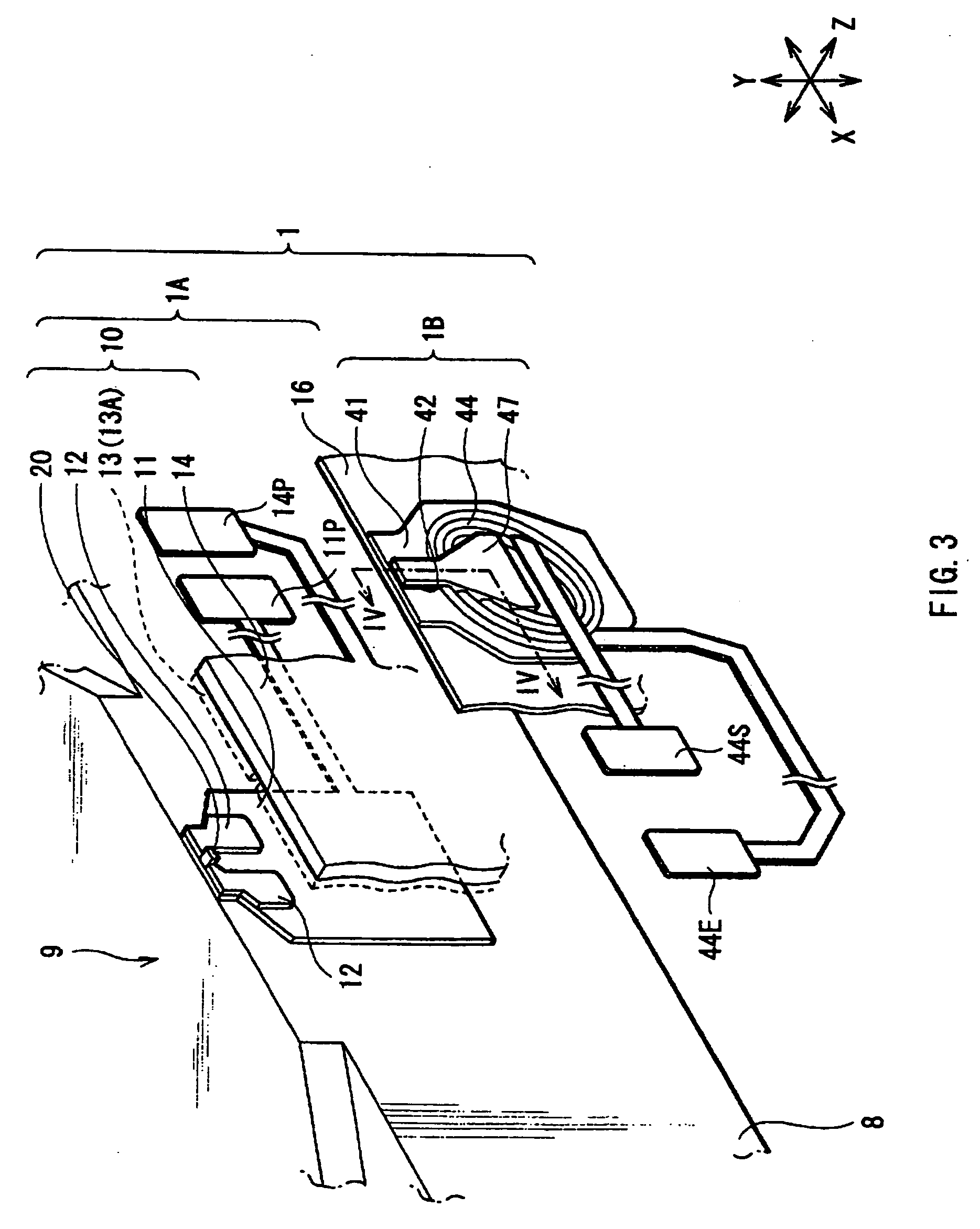Magnetoresistive device, thin film magnetic head, head gimbals assembly, head arm assembly, magnetic disk apparatus, synthetic antiferromagnetic magnetization pinned layer, magnetic memory cell, and current sensor
- Summary
- Abstract
- Description
- Claims
- Application Information
AI Technical Summary
Benefits of technology
Problems solved by technology
Method used
Image
Examples
first embodiment
[0051] First, by referring to FIGS. 1 to 5, the configuration of a synthetic antiferromagnetic magnetization pinned layer and a magnetoresistive element, a thin film magnetic head, a head gimbals assembly, a head arm assembly, and a magnetic disk apparatus each having the synthetic antiferromagnetic magnetization pinned layer as a first embodiment of the invention will be described below.
[0052]FIG. 1 is a perspective view showing the internal configuration of the magnetic disk apparatus according to the first embodiment. The magnetic disk apparatus employs, as the driving system, a CSS (Contact-Start-Stop) operating system. As shown in FIG. 1, for example, a magnetic recording medium 200 as a magnetic recording medium on which information is to be recorded and a head arm assembly (HAA) 300 for recording / reading information to / from the magnetic recording medium 200 are provided in a casing 100. The HAA 300 has a head gimbals assembly (HGA) 2, an arm 3 for supporting the base portion...
second embodiment
[0086] By referring to FIGS. 14 to 16, a magnetic memory cell and a magnetic memory cell array having the same as a second embodiment of the present invention will be described below. FIG. 14 is an enlarged plan view of a part of a magnetic memory cell array (hereinbelow, called MRAM array) in which a plurality of magnetic memory cells 101 of the second embodiment are arranged in a matrix. FIG. 15 shows a sectional structure taken along the XV-XV cut line illustrated in FIG. 14.
[0087] As shown in FIGS. 14 and 15, the MRAM array has a plurality of word lines 126 extended in the L-axis direction and arranged in the K-axis direction so as to be parallel with each other in a first level, and a plurality of bit lines 125 extended in the K-axis direction and arranged in the L-axis direction so as to be parallel with each other in a second level different from the first level. Further, one MR film 124 and one lower electrode 123 are provided to construct one magnetic memory cell 101 at ea...
third embodiment
[0095] By referring to FIGS. 17A to 17C and FIG. 18, a current sensor as a third embodiment of the present invention will now be described.
[0096]FIGS. 17A to 17C show a schematic configuration of a current sensor 210 of the third embodiment. FIG. 17A shows a plane configuration of the current sensor 210. FIG. 17B shows a sectional configuration of the current sensor 210 taken along line XVII-XVII of FIG. 17A. FIG. 17C shows an equivalent circuit corresponding to FIG. 17A. The current sensor 210 functions to detect the intensity of a current magnetic field generated by current flowing near the current sensor 210, thereby measuring the magnitude of the current.
[0097] As shown in FIG. 17A, the current sensor 210 has a configuration in which an MR film 220 and a current line 230 which is provided adjacent to the MR film 220 and through which current to be detected flows are formed over a not-shown substrate. The MR film 220 has a pinned layer whose magnetization direction is pinned in...
PUM
 Login to View More
Login to View More Abstract
Description
Claims
Application Information
 Login to View More
Login to View More - R&D
- Intellectual Property
- Life Sciences
- Materials
- Tech Scout
- Unparalleled Data Quality
- Higher Quality Content
- 60% Fewer Hallucinations
Browse by: Latest US Patents, China's latest patents, Technical Efficacy Thesaurus, Application Domain, Technology Topic, Popular Technical Reports.
© 2025 PatSnap. All rights reserved.Legal|Privacy policy|Modern Slavery Act Transparency Statement|Sitemap|About US| Contact US: help@patsnap.com



